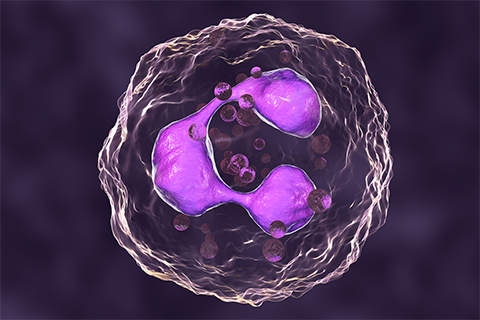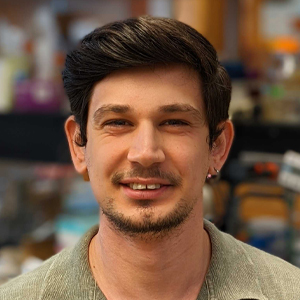Probing for a ketone body’s link to age-related inflammation
Glucose levels in the blood and cells are regulated by the pancreatic hormones insulin and glucagon. While insulin helps cells to take in glucose and reduces blood glucose levels, glucagon initiates the conversion of stored glycogen to glucose.
When glucose is depleted, insulin levels decrease but glucagon levels remain stable. In cells, this triggers the release of fats, which are converted into different types of ketone bodies by the enzyme 3-Hydroxy-3-methylglutaryl-CoA, or HMGCL, in the liver. One of these ketone bodies, beta-hydroxybutyrate, or BHB, can be an energy source for the brain and skeletal muscle when blood glucose is low. Several studies have also shown that BHB also plays a role in the signaling pathways of lipolysis and aging.

Emily Goldberg, a researcher at the University of California, San Francisco, studies NOD-, LRR- and pyrin domain-containing protein 3, known as NLRP3, and how this protein interacts with BHB. NLRP3 helps to regulate the innate immune system and inflammatory signaling as well as age-related inflammation.
“We had previously shown that the NLRP3 drives age-related inflammation and that the ketone body BHB inhibits NLRP3 activation in macrophages and neutrophils, so we hypothesized that BHB might inhibit age-related inflammation,” Goldberg said.
Although most ketone bodies are produced in liver cells, researchers hypothesize that they also can be synthesized by cells from other tissues, including macrophages and neutrophils.
To test their hypothesis about BHB, Goldberg and a team of researchers from UCSF and the Yale School of Medicine used mice from which they deleted the gene that encodes the HMGCL enzyme. This helped them prevent ketone body synthesis in specific cell types, namely macrophages and neutrophils.
“Making the mice to test this hypothesis and planning the experiments to have enough aged mice was the most difficult part of the study,” Goldberg said.
The team compared the role of liver-based ketone body formation with that of cell-specific ketone body formation in age-related inflammation.
In their recent paper published in the Journal of Biological Chemistry, the researchers point out that the liver is the only organ that can produce enough ketone bodies to maintain blood glucose levels, and neutrophil-based ketogenesis does not regulate age-related metabolic health.
“Exogenous ketones are likely responsible for controlling innate immune inflammation in aging,” Goldberg said, “Macrophages can metabolize acetoacetate, but not BHB and this is important for their function. But why innate immune cells take up BHB remains unclear.”
The group only used a single mouse strain; using other strains and different mutations in different enzymes in the ketone body formation pathway could show different results. Goldberg said that next they will consider all these limitations and aim to determine why innate immune cells take up BHB.
Enjoy reading ASBMB Today?
Become a member to receive the print edition four times a year and the digital edition monthly.
Learn moreGet the latest from ASBMB Today
Enter your email address, and we’ll send you a weekly email with recent articles, interviews and more.
Latest in Science
Science highlights or most popular articles

Mining microbes for rare earth solutions
Joseph Cotruvo, Jr., will receive the ASBMB Mildred Cohn Young Investigator Award at the ASBMB Annual Meeting, March 7–10, just outside of Washington, D.C.

Fueling healthier aging, connecting metabolism stress and time
Biochemist Melanie McReynolds investigates how metabolism and stress shape the aging process. Her research on NAD+, a molecule central to cellular energy, reveals how maintaining its balance could promote healthier, longer lives.

Mapping proteins, one side chain at a time
Roland Dunbrack Jr. will receive the ASBMB DeLano Award for Computational Biosciences at the ASBMB Annual Meeting, March 7–10, just outside of Washington, D.C.

Exploring the link between lipids and longevity
Meng Wang will present her work on metabolism and aging at the ASBMB Annual Meeting, March 7-10, just outside of Washington, D.C.

Defining a ‘crucial gatekeeper’ of lipid metabolism
George Carman receives the Herbert Tabor Research Award at the ASBMB Annual Meeting, March 7–10, just outside of Washington, D.C.

The science of staying strong
Muscles power every movement, but they also tell the story of aging itself. Scientists are uncovering how strength fades, why some species resist it and what lifestyle and molecular clues could help preserve muscle health for life.

